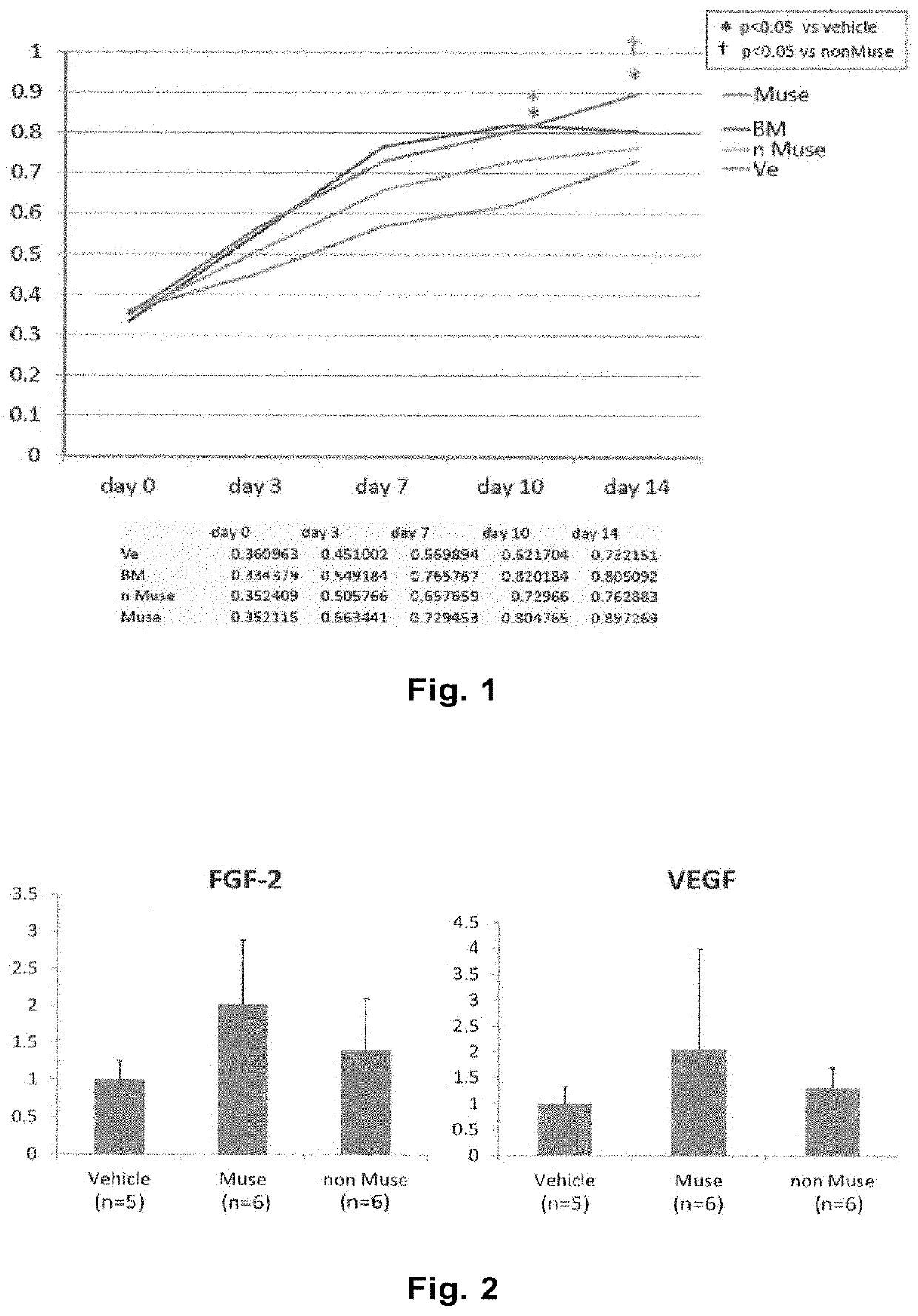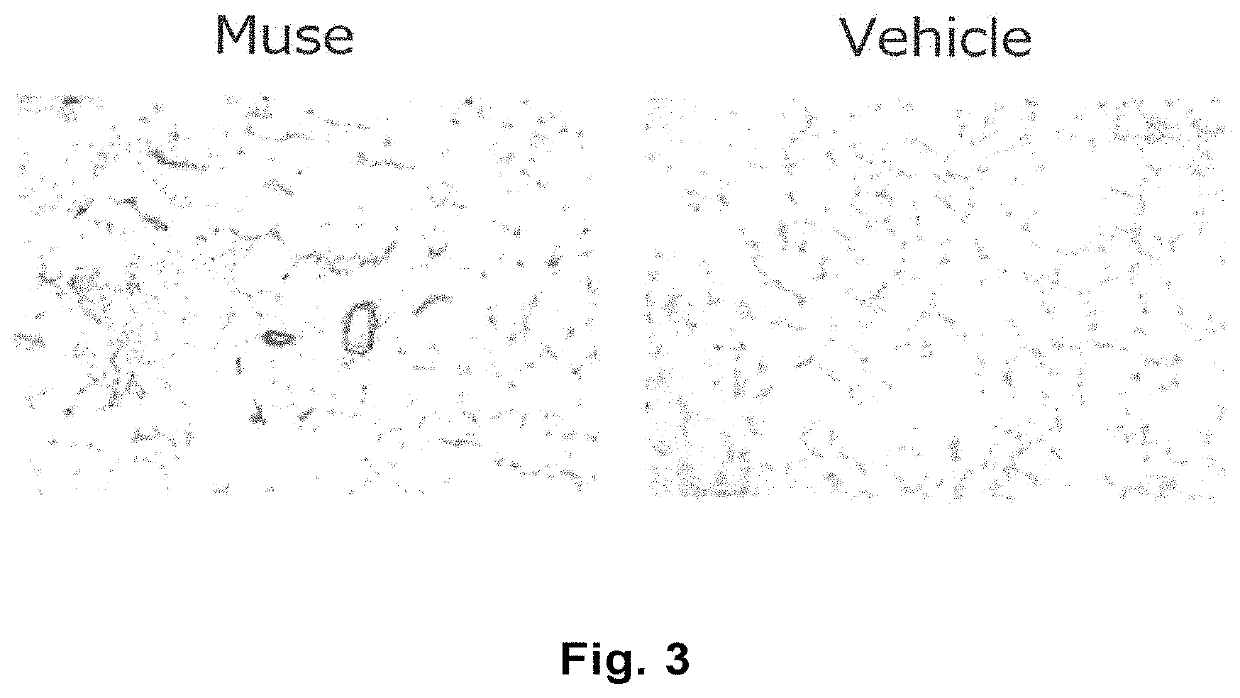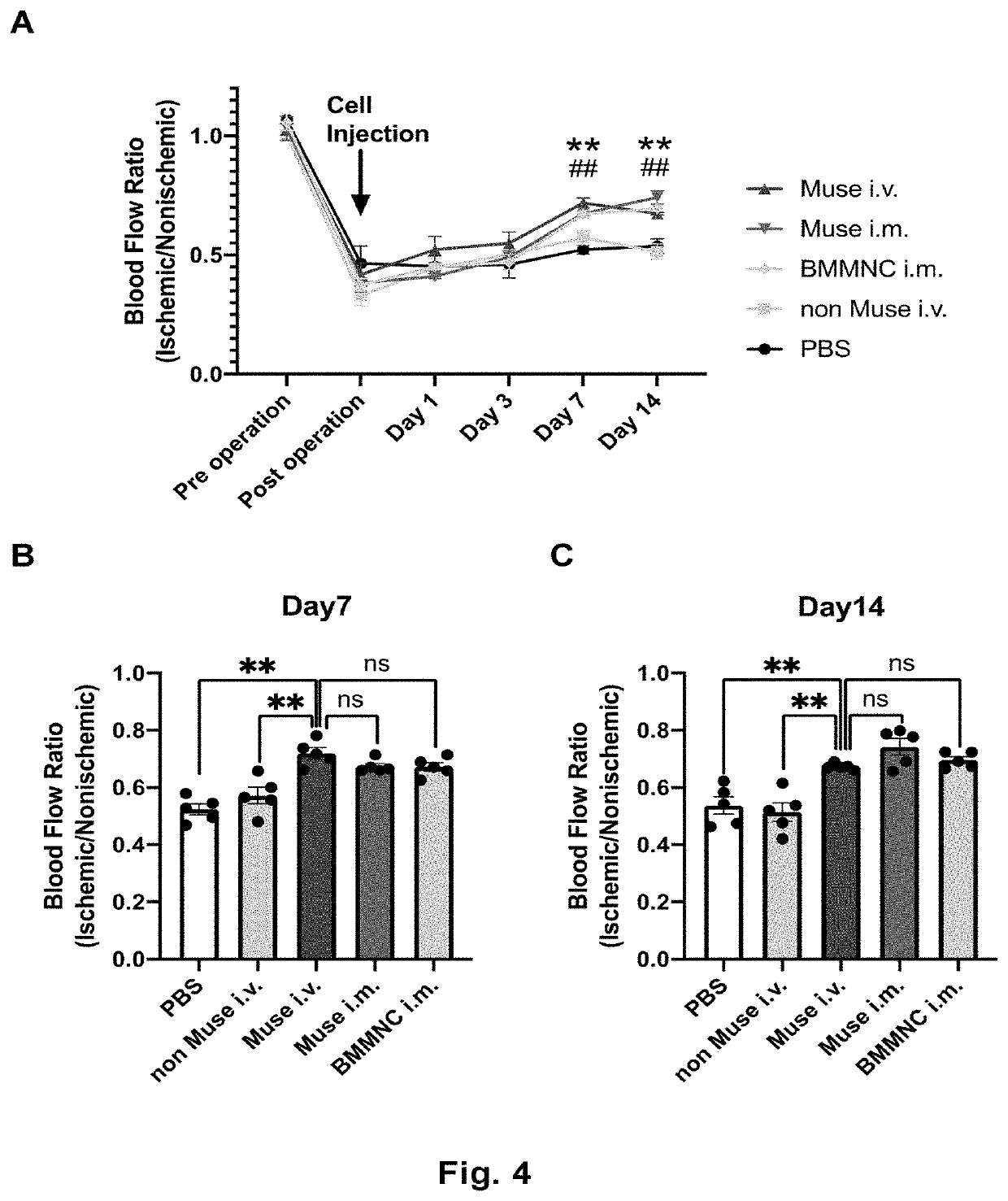Therapeutic agent of peripheral blood flow disorder
a technology of peripheral blood flow and therapeutic agent, which is applied in the field of regenerative therapy, can solve the problems of high mortality rate, poor prognosis of peripheral blood flow disorder, and ineffective above-described medical treatment or surgical treatment, and achieve excellent safety, improve treatment effect, and improve the effect of blood flow disorder
- Summary
- Abstract
- Description
- Claims
- Application Information
AI Technical Summary
Benefits of technology
Problems solved by technology
Method used
Image
Examples
example 1
on of Mouse Model of Lower Limb Ischemia
[0094]The experimental protocols using mice in this Example complied with “Regulations on Animal Experiments and Related Activities in Kyoto Prefectural University of Medicine,” and the experimental animals were prepared in accordance with the regulations under the supervision of the Animal Experiment Center of Kyoto Prefectural University of Medicine. More specifically, mice were prepared according to the following protocol.
[0095]Eight to ten-week female BALB / C nude mice were anesthetized by isoflurane inhalation (4% for induction, and 2% for maintenance). The lower limb was incised, and left common femoral arteries and veins, and left peripheral superficial femoral arteries and veins were ligated with a 5-0 silk suture under a stereoscopic microscope (KONAN OPERATION MICROSCOPE KOM). The mice thus prepared were used as a mouse model of lower limb ischemia in the following experiments.
example 2
on of Human Muse Cell
[0096]Muse cells were obtained according to the method for isolation and identification of human Muse cells described in WO2011 / 007900. A commercially available mesenchymal stem cell (MSC, Lonza) was used as a source of Muse cells. Muse cells used for transplantation were made to express green fluorescent protein (GFP) to determine whether the cells engraft into the impaired peripheral arterial site. For cell labeling with GFP, Muse cells had been previously transduced with a lentivirus-GFP gene. GFP-labeled Muse cells are isolated as GFP- and SSEA-3-double positive cells by FACS. The remaining cells obtained by isolating Muse cells from MSCs were used as non-Muse cells. GFP-positive MSCs were also isolated by FACS and used as a MSC group.
example 3
ation of Cells to Mouse Model of Lower Limb Ischemia
[0097]The lower limb ischemia model mice prepared in Example 1 were divided into four groups. At Day 1 after preparation of the model, mice in each group received Muse cells (3×104 cells in 100 μL) (Muse), non-Muse cells (3×104 cells in 100 μL) (nMuse), MSCs (2×105 cells in 100 μL) (BM), or the vehicle (phosphate buffer) (Ve) at two separate locations on the left femoral region. One group included five animals.
PUM
 Login to View More
Login to View More Abstract
Description
Claims
Application Information
 Login to View More
Login to View More - R&D
- Intellectual Property
- Life Sciences
- Materials
- Tech Scout
- Unparalleled Data Quality
- Higher Quality Content
- 60% Fewer Hallucinations
Browse by: Latest US Patents, China's latest patents, Technical Efficacy Thesaurus, Application Domain, Technology Topic, Popular Technical Reports.
© 2025 PatSnap. All rights reserved.Legal|Privacy policy|Modern Slavery Act Transparency Statement|Sitemap|About US| Contact US: help@patsnap.com



